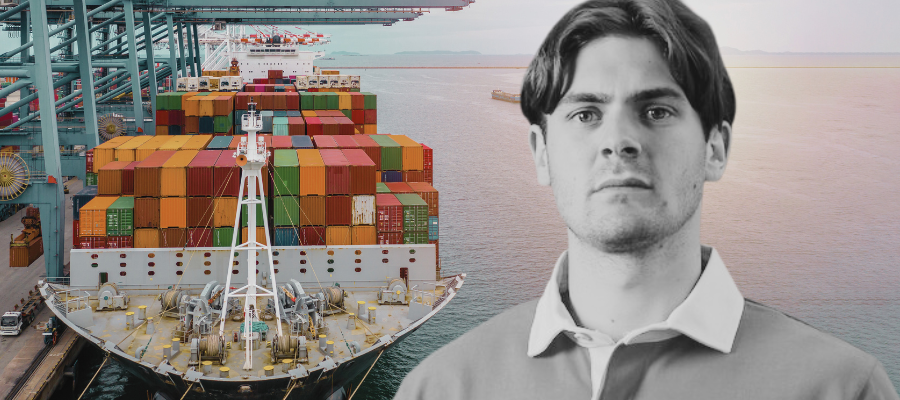🕒 Article read time: 2 minutes
Shipping and port connectivity needs “more effective government support”, urges Logistics UK

The maritime supply chain is critical for our global competitiveness; the UK is an island nation and 90% of everything we buy arrives at our shores by sea.
To ensure maximum efficiency and to increase the potential for freight, world-class road and rail connections to our maritime ports are needed, along with more effective government support – to encourage modal shift to maritime – and greater use of our inland waterway network for freight.
BETTER SUPPORT
“Currently, coastal shipping and inland waterways account for 15% of UK domestic freight,” says Ellis Shelton, Policy Advisor at Logistics UK. “However, there is further capacity available on these routes.
“With more effective government support to promote modal shift, and policy frameworks that protect and expand our inland waterway freight infrastructure, these modes could grow even further and reduce pressure on our congested roads” continues Shelton. “This can lead to improved air quality, reduced carbon emissions, and less wear and tear on infrastructure.”
INLAND WATERWAYS
Inland waterways can also provide a more efficient means of transportation for certain types of freight, particularly bulk commodities like grain, coal and petroleum products.
“These waterways are generally less expensive than shipping via road or air – particularly for heavier items – and at a time when industry costs are soaring, could result in crucial cost savings for both businesses and consumers,” says Shelton.
“This method of shipping is also – as a general rule – a more environmentally friendly alternative to road or rail transport. By promoting modal shift to maritime transport, we can help to reduce the carbon footprint of the freight industry.”
CRITICAL CONNECTIVITY
Connectivity between ports and the UK’s rail and road networks is critical to our success as a trading nation. While there are clear benefits to maximising our shipping network, goods must then be transported inland to their intended destination. Currently, connectivity issues affect the majority of UK ports, and a national, joined-up approach to better enable freight corridors anchored on ports is needed.
“There is a significant case for expanding rail freight capacity at ports,” says Shelton. “Currently, one in four sea containers arriving at UK ports is carried inland by rail. With each freight train able to remove approximately 60 HGVs from the road, it is important that opportunities to increase the amount moved by rail are explored.
“Additionally, freight trains achieve over 95% reliability in on-time performance, which would allow for the heightened efficiency of freight transport; ultimately enabling better growth and productivity figures.”
INSUFFICIENT RAIL LINKS
The Port of Felixstowe is an example of a port hampered through insufficient rail connections. Acting as a major gateway for trade between the UK and the rest of the world – with direct connections to over 700 ports in 160 countries – the Port of Felixstowe is the largest container port in the UK, and one of the busiest in Europe, handling over four million twenty-foot equivalent units (TEUs) of cargo per year.
“Despite the port’s importance to the UK economy, the current single-track Felixstowe branch railway line is not capable of handling large volumes of freight traffic efficiently, resulting in capacity constraints and limited intermodal connectivity,” says Shelton.
“It is therefore vital to upgrade the Felixstowe branch line to a double-track system with modern signalling technology. This would improve the flow of goods in and out of the port.
“Another option is to build a dedicated freight line that would bypass congested areas and allow for faster and more frequent freight services. This could involve building new track, bridges and tunnels. Alongside this, there is the option to improve rail connections to the national rail network. Connecting the Felixstowe branch line to the national rail network at Ipswich could improve the port’s accessibility to more parts of the country.”
VITAL ECONOMIC INFRASTRUCTURE
However, it is not just rail connectivity to ports that must be reviewed. Many UK ports are either connected directly to the Strategic Road Network (SRN), or via local road networks which link to the SRN.
Often the responsibility of local authorities, it’s important that these routes are seen as pieces of vital economic infrastructure and are adequately funded to not only ensure they are well maintained, but that they have sufficient capacity to support existing and future freight movements.
“Overall, logistics is a highly complex industry with modes often interlinked,” says Shelton. “It is vital that, to maximise trading opportunities and the success of the economy, sufficient infrastructure is in place.
“Additionally, improving rail and road connections to maritime ports can help to stimulate economic development in surrounding areas, by providing better access to markets and creating jobs in transportation and related industries. Logistics UK will continue to work with both government and members to establish areas of concern and identify solutions that are both efficient and achievable.”
*www.logistics.org.uk/campaigns
Published On: 11/05/2023 16:00:04

Comments Section
If you are a Logistics UK member login to add comments.